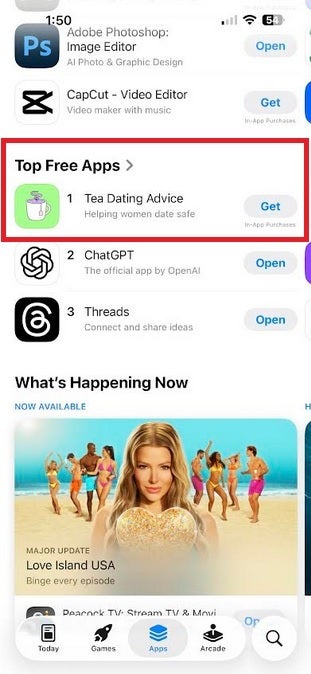Intro
After ruffling the feathers of the Android smartwatch community with its excellent but not terribly original Galaxy Watch Ultra last year, Samsung is set to release an updated version of its Apple Watch Ultra rival this July.
This is pretty much the norm these days when it comes to intergenerational improvements. Granted, the original Galaxy Watch Ultra doesn’t feel outdated in any way shape or form, so no major changes were necessary in the first place, anyway.
Still, we can’t have a new device release without any changes whatsoever.
Galaxy Watch Ultra (2025) vs Galaxy Watch Ultra: differences
- Mostly unchanged design language
- Titanium Silver, Titanium Gray, Titanium Blue vs Titanium Silver, Titanium. Gray, Titanium White colors
- New bands/band colors
- Non-invasive blood glucose monitoring possible
- IP68, 10ATM, MIL-STD-801H on both
- BioActive sensor on both
- Wear OS 5 with One UI Watch 8 on both devices
- New AIAI features, health recommendations
- Same price as before ($650)
Table of Contents:
Design & Sizes
The Ultra blueprint
As already mentioned, the Galaxy Watch Ultra is widely expected to score no visual changes in comparison with its predecessor.


Galaxy Watch Ultra (2025) render (Image Credit — Evan Blass)
The device will once again come with three buttons on the right-hand side. The standard top and bottom navigation buttons are divided by a large customizable button in the middle, which can enable different features and functionalities. On the left-hand side of the case, we will likely get the large dual slits for the loudspeakers. At the bottom, Samsung’s all-encompassing BioActive sensor will reign supreme.
In terms of size, the Galaxy Watch Ultra will once again be available in a single 47mm size with a flat 1.5-inch sapphire screen, like its predecessor. In terms of thickness, expect this one to gravitate around 12 mm in thickness, so it will definitely stick out of your your shirt cuffs.
In terms of ruggedness, we expect the Galaxy Watch Ultra (2025) to be a carbon-copy of the older Ultra and support IP68 water- and dust-resistance, enhanced waterproofing up to 100 meters (10ATM), and also feature MIL-STD-801H shockproofing.
Rumors have it we might see some upgrades to the overall durability here, with one of the possible solutions being an upgrade to IP69K, which would protect it against strong water jets from any direction.
Bands
Single-button detachment, what’s there not to like?
That said, a recent patent application suggests Samsung might be exploring ways to further improve its single-button band attachment mechanism and make it even easier to switch bands on the fly. This novelty might arrive alongside a future Galaxy Watch generation, but not with this year’s Samsung watches.
We expect a new color version of the Galaxy Watch Ultra (2025), called Titanium Blue, which would come with a rugged new fluoroelastomer band in deep blue color, which might look quite appealing.
Software & Features
Wear OS and One UI Watch for the win
Samsung and Google’s partnership in terms of software is thankfully set to continue, and the Galaxy Watch Ultra (2025) will arrive with Wear OS 5 running beneath a refreshed One UI Watch 8 wrapper. We expect Google’s Material 3 Expressive design language to make it to Samsung’s rugged smartwatch eventually and boost the personalization options here.
The general interface and UX are unlikely to change too much.
A major new health feature coming our way is likely a non-invasive blood glucose monitoring addition to Samsung’s BioActive sensor, which will use light to measure your blood sugar levels. A potential game changer for diabetics if Samsung pulls this one.
Other than that, the Galaxy Watch Ultra (2025) and the Galaxy Watch Ultra will share most of their health and wellness features, like ECG, blood pressure monitoring, VO2, heartrate, and so on. We are also reportedly getting improvements to sleep tracking and data interpretation.
Once again, the Galaxy Watch Ultra (2025) will surely only work with Android devices, but some essential health features might remain exclusive to Galaxy phones. Blood-pressure monitoring and ECG currently only work with Galaxy phones, and we imagine glucose monitoring might follow. iOS isn’t supported.
Battery and Charging
No changes
The Galaxy Watch Ultra (2025) is likely coming with a battery in the ballpark of 590 mAh, which was the same battery that made it inside the first Galaxy Watch. As the chipset inside will remain the same (Samsung’s 3nm Exynos W1000 chip), we don’t expect any major improvements to efficiency either.
This means the Galaxy Watch Ultra (2025) will likely boast the same battery life as its predecessor, likely two to three days based on the usage.
Charging-wise, it’s extremely unlikely we’d get anything apart from the standard 10W wireless charging. It takes nearly two hours to fully charge the older Galaxy Watch Ultra, so the same will probably ring true for the successor as well.
Both smartwatches are available in a single 47mm size, and you can only have either one with cellular connectivity, which kind of limits the choices you have.
The older Galaxy Watch Ultra goes for $649.99, and we don’t expect a price hike for its successor.
Specs
| Galaxy Watch Ultra (2025) | Galaxy Watch Ultra |
|---|---|
| Models 47mm Wi-Fi + Cellular versions |
Models 47mm Wi-Fi + Cellular versions |
| Processor Exynos W1000 chip 3nm |
Processor Exynos W1000 chip 3nm |
| Software WearOS 6, One UI Watch 8 |
Software WearOS 6, One UI Watch 8 |
| Battery ~590 mAh 10W wireless charging |
Battery 590 mAh 10W wireless charging |
| Sensors BioActive, HR, blood oxygen, altimeter, ECG, water/skin temperature blood glucose montoring |
Sensors BioActive, HR, blood oxygen, altimeter, ECG, water/skin temperature blood glucose montoring |
| Key features 100ATM, MIL-STD-810H Blood glucose monitoring AI features |
Key features 100ATM, MIL-STD-810H |
Summary
From the looks of it, Samsung is set to improve its flagship smartwatch this year, but isn’t too keen on making any sudden moves and changing the overall experience too much. That’s alright, as we didn’t expect any such major shifts, either.
The new Ultra is clearly aimed at consumers that are poised to upgrade to an Android-powered large and premium smartwatch this year and counting on Apple Watch Ultra fatigue to score new adopters.
It doesn’t feel as if Galaxy Watch Ultra should feel compelled to upgrade this year on the basis that their smartwatches could be 95% identical to the new model, so no major value will be gained. Of course, if any of the rumored features sound like major improvements to you, then the world’s your oyster, and there’s nothing stopping you from upgrading.







